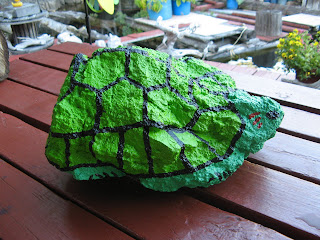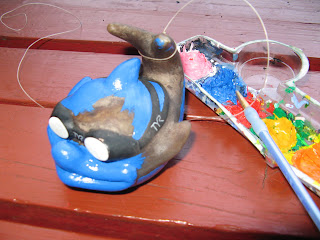
This year the blackberries have been exceptionally big and juicy. Each time we head up the lake, I pick a some from the bushes in the Shinglemill parking lot. They come in waves, so there've been lots for the picking. My cupboard was bare, so I decided to make some blackberry.
 Blackberry Jam Recipe
Blackberry Jam Recipe
I used two resources to make my jam. The first was a book I found at
Kingfisher Used Books here in Powell River, the
Farm Journal's Freezing and Canning Cookbook. I got mine used for $3.95, but they are much pricier online. I also used the
directions from the
Certo Pectin Crystals box.
 The ingredients are simple.
The ingredients are simple.
Yields about 8 cups. Do not double the recipe.
5 cups crushed blackberries
1 box Certo Pectin Crystals
7 cups granulated sugar

Thoroughly crush berries. You can remove some of the seeds if you wish, but I like them included. The Farm Journal cookbook recommended lemon juice, so I added two tablespoons of fresh squeezed to the berry mixture.

Mix the crushed berries and the Certo Pectin Crystals in a large pan. Bring to a boil over high heat. Then add the sugar all at once. Return it to a hard boil and let it boil for one minute. The cookbook says to be very accurate, so I used my timer. Remove from heat and stir and skim for five minutes.

Pour into warm, sterilized jars to 1/4" from the rim. I used 250 ml (8.5 oz) jars. Wipe the tops clean of any spilled jam and place sterilized lids and screw caps on, making them finger tight. The Farm Journal book recommend five minutes of processing in a boiling water bath (the lid was off only for the picture), so that is what I did.

The trick to jam making for the novice is to have things ready to go. I boiled the water to sterilize my jars and lids first. Then it was held at the ready for the boiling water bath at the end. The whole process took me about two hours, but the end result was some really tasty jam that will last us through the winter, reminding us of the warm, sunny days of August. -- Margy
 This has been quite the year for Powell River Books and our float cabin to be in the news. It started with the Travel Channel for an upcoming show Extreme Houseboats. That was followed by an excellent YouTube video about float cabin living by Kirsten Dirksen of faircompanies.com. Several sites picked it up and created news articles including Business Insider and The Blaze. Then there was the interview and article for the Huffington Post.
This has been quite the year for Powell River Books and our float cabin to be in the news. It started with the Travel Channel for an upcoming show Extreme Houseboats. That was followed by an excellent YouTube video about float cabin living by Kirsten Dirksen of faircompanies.com. Several sites picked it up and created news articles including Business Insider and The Blaze. Then there was the interview and article for the Huffington Post. To cap it all off, reporter Kierra Jones of the Powell River PEAK came out to the cabin for an interview and to take some pictures. We picked Kierra up at the Shinglemill Marina for lunch with us at the cabin and an onsite interview. This week her article "Lutzs love life up the lake" was published. Were we surprised when we got our copy of the PEAK and found ourselves on the front page, both online and in print.
To cap it all off, reporter Kierra Jones of the Powell River PEAK came out to the cabin for an interview and to take some pictures. We picked Kierra up at the Shinglemill Marina for lunch with us at the cabin and an onsite interview. This week her article "Lutzs love life up the lake" was published. Were we surprised when we got our copy of the PEAK and found ourselves on the front page, both online and in print. Thanks Kierra for sharing about our life up the lake and Wayne's Coastal BC Stories and Anomaly at Fortune Lake science fiction books. -- Margy
Thanks Kierra for sharing about our life up the lake and Wayne's Coastal BC Stories and Anomaly at Fortune Lake science fiction books. -- Margy









































